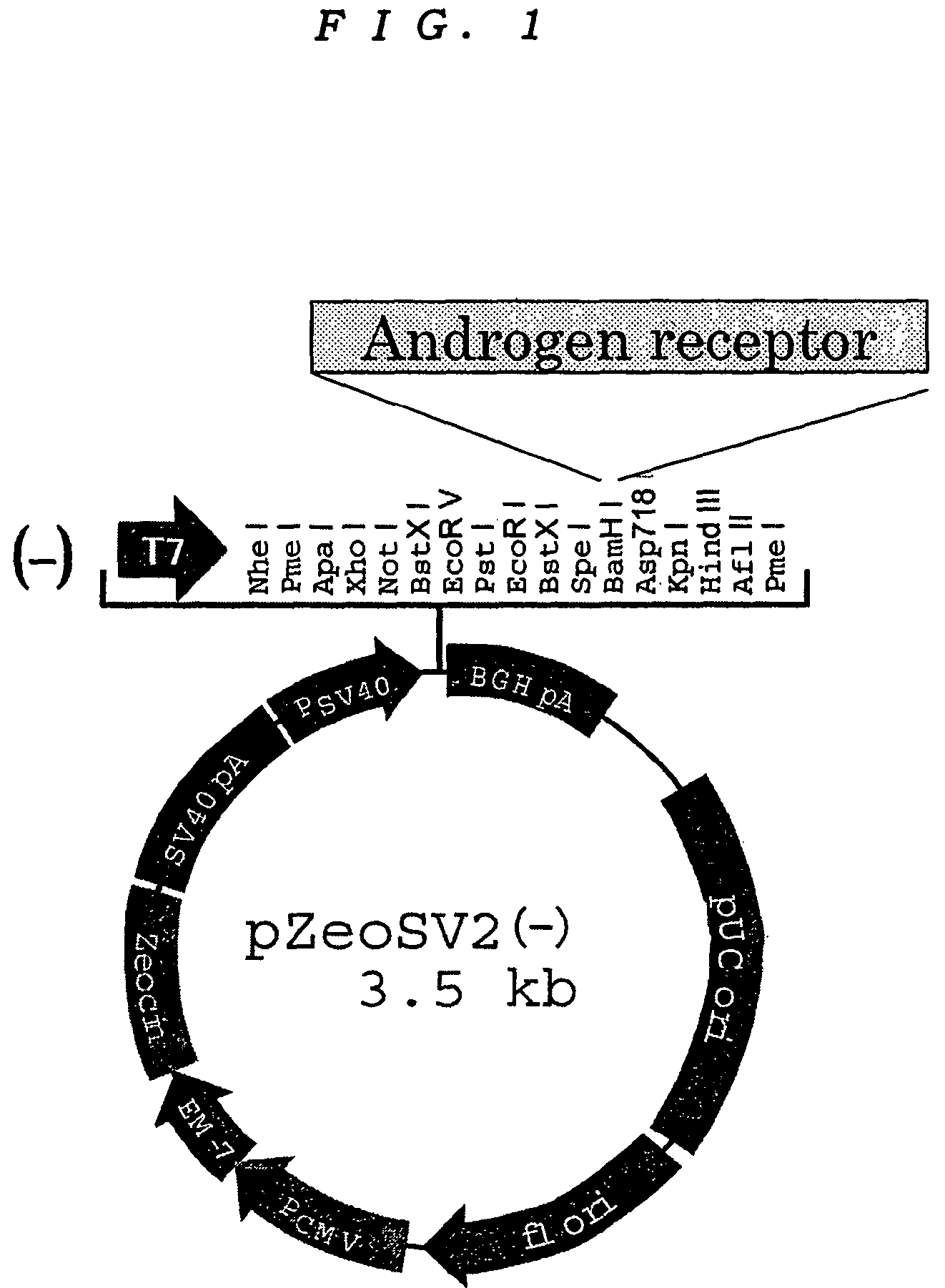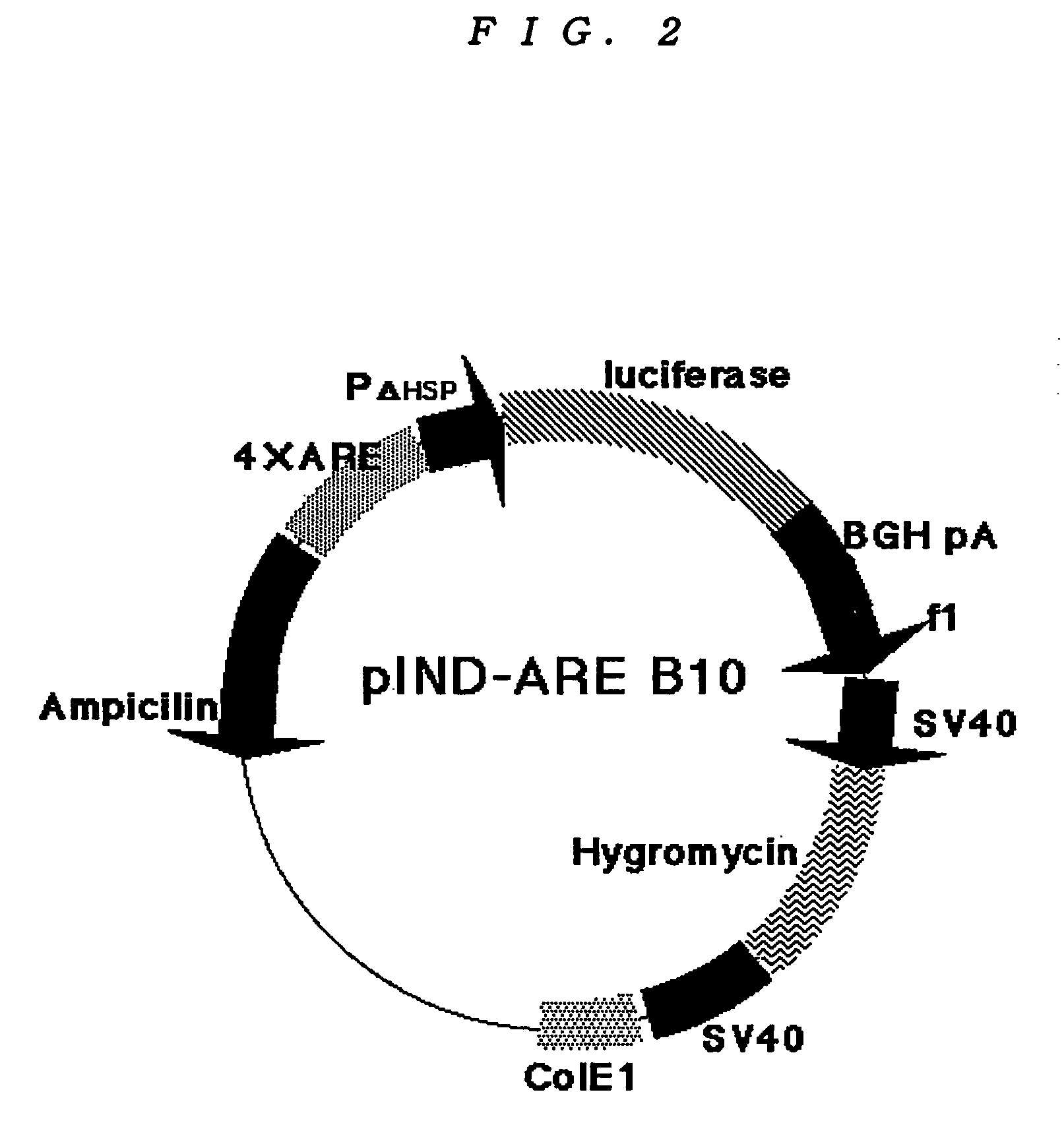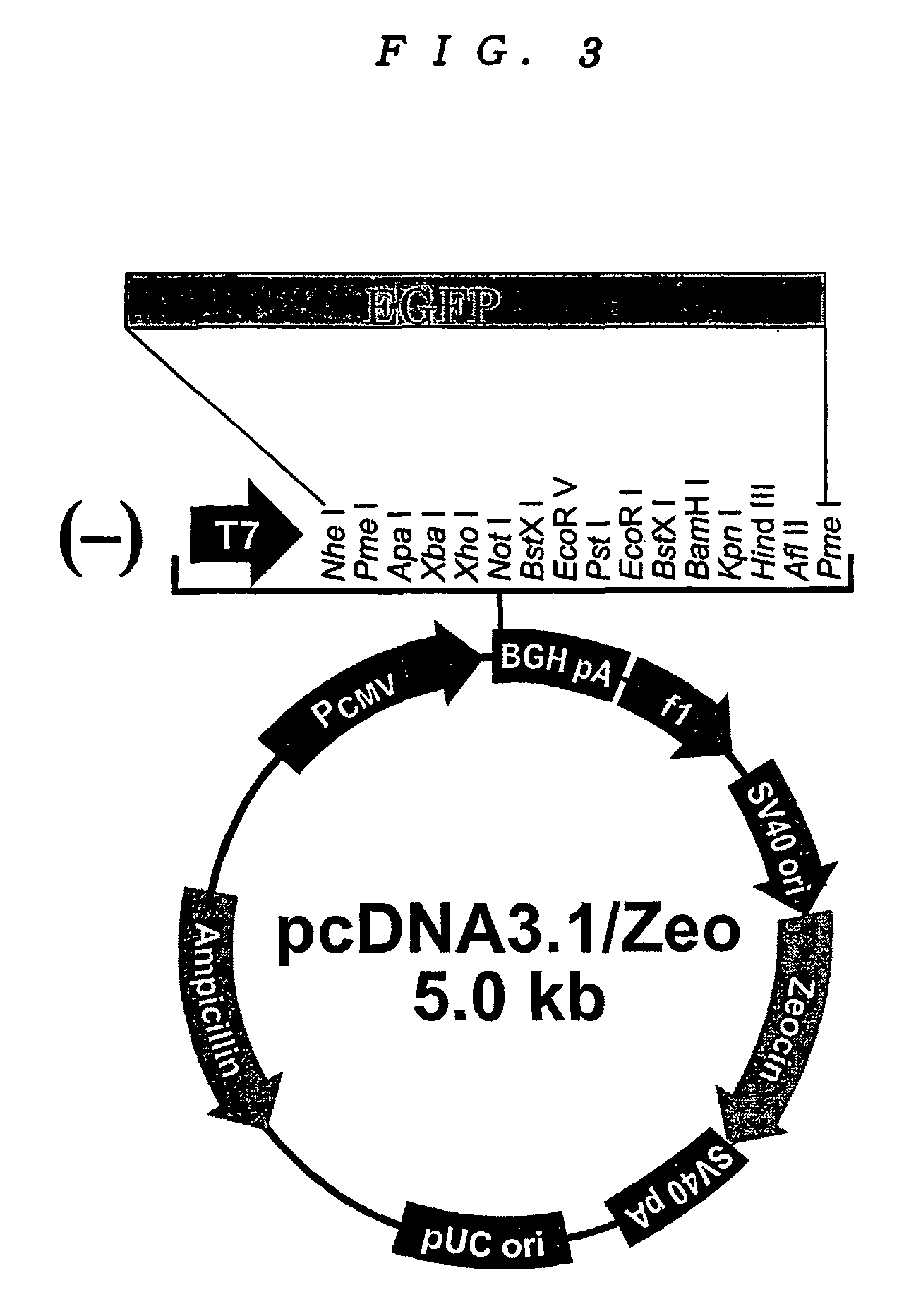Reporter gene assay method
a reporter gene and gene technology, applied in the field of reporter gene assay method, can solve the problems of destroying the hormonal balance of animals, environmental pollution by such substances, and becoming more and more serious
- Summary
- Abstract
- Description
- Claims
- Application Information
AI Technical Summary
Benefits of technology
Problems solved by technology
Method used
Image
Examples
example 1
(1) Construction of an Androgen Receptor Expression Vector
[0057]The androgen receptor (AR) gene was amplified from human prostate total RNA by the RT-PCR technique, and the amplification product was subcloned into the cloning vector TA cloning (Invitrogen) and the base sequence thereof was determined. It was confirmed that this is identical with that of the human AR gene registered in GenBank.
[0058]The above DNA was cloned, as an insert DNA, in the SV40 promoter-containing expression vector pZeoSV2(−) (Invitrogen) at the BamHI site thereof. An AR expression vector, pZeoSV2-AR (total length: 3515 bps), was thus constructed.
[0059]Typical characteristic features of this AR expression vector are shown in FIG. 1. The abbreviations used in FIG. 1 are as follows:[0060]Psv40: SV40 promoter[0061]T7: T7 promoter / primer[0062]BGH pA: BGH reverse priming site[0063]pUC ori: pUC origin[0064]PCMV: CMV promoter[0065]f1 ori: f1 origin[0066]PCMV: CMV promoter[0067]EM-7: EM-7 promoter[0068]Zeocin: Zeoc...
PUM
| Property | Measurement | Unit |
|---|---|---|
| volume | aaaaa | aaaaa |
| volume | aaaaa | aaaaa |
| fluorescence wavelength | aaaaa | aaaaa |
Abstract
Description
Claims
Application Information
 Login to View More
Login to View More - R&D
- Intellectual Property
- Life Sciences
- Materials
- Tech Scout
- Unparalleled Data Quality
- Higher Quality Content
- 60% Fewer Hallucinations
Browse by: Latest US Patents, China's latest patents, Technical Efficacy Thesaurus, Application Domain, Technology Topic, Popular Technical Reports.
© 2025 PatSnap. All rights reserved.Legal|Privacy policy|Modern Slavery Act Transparency Statement|Sitemap|About US| Contact US: help@patsnap.com



